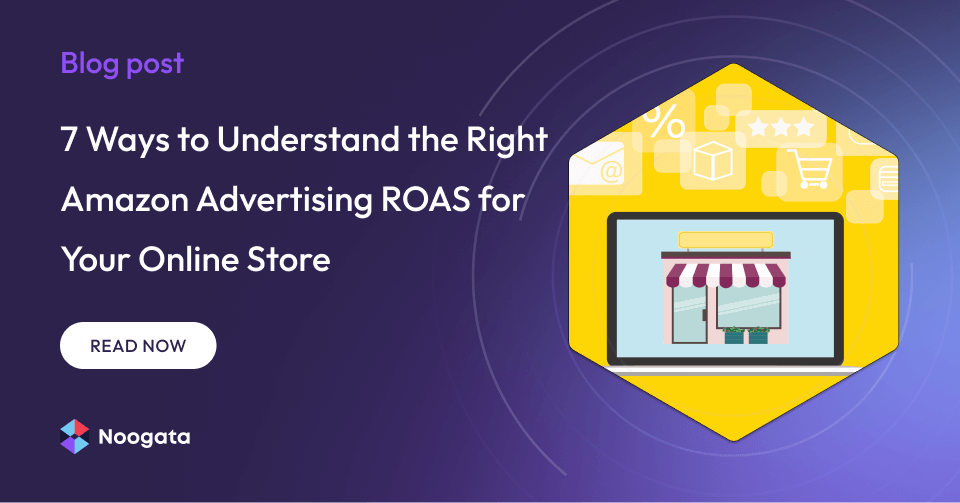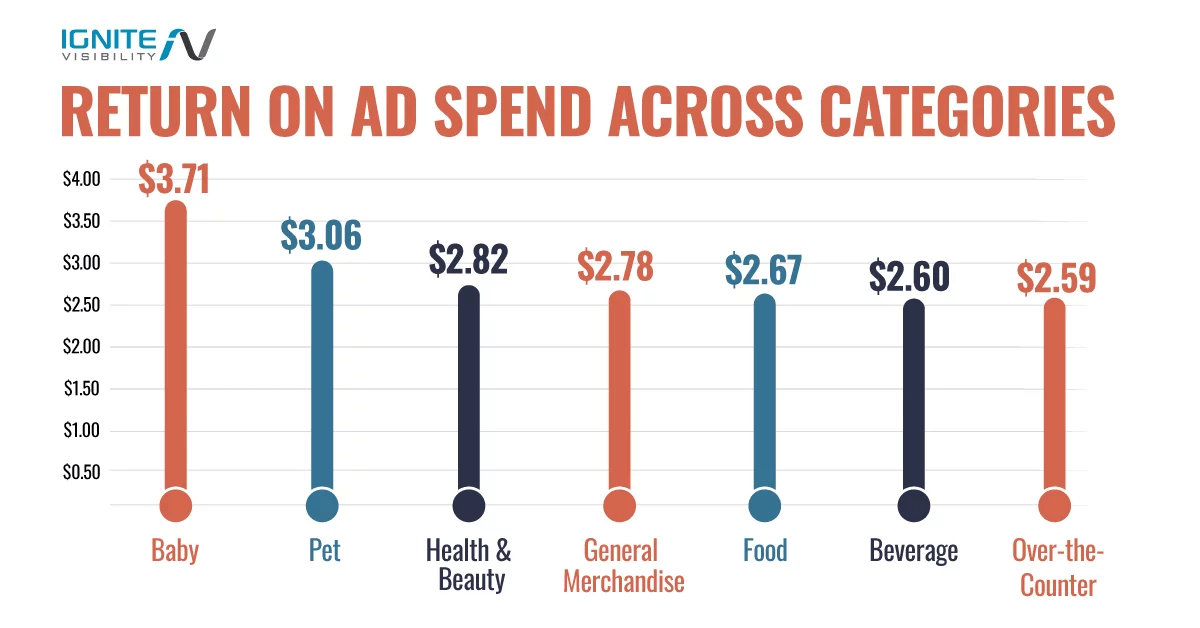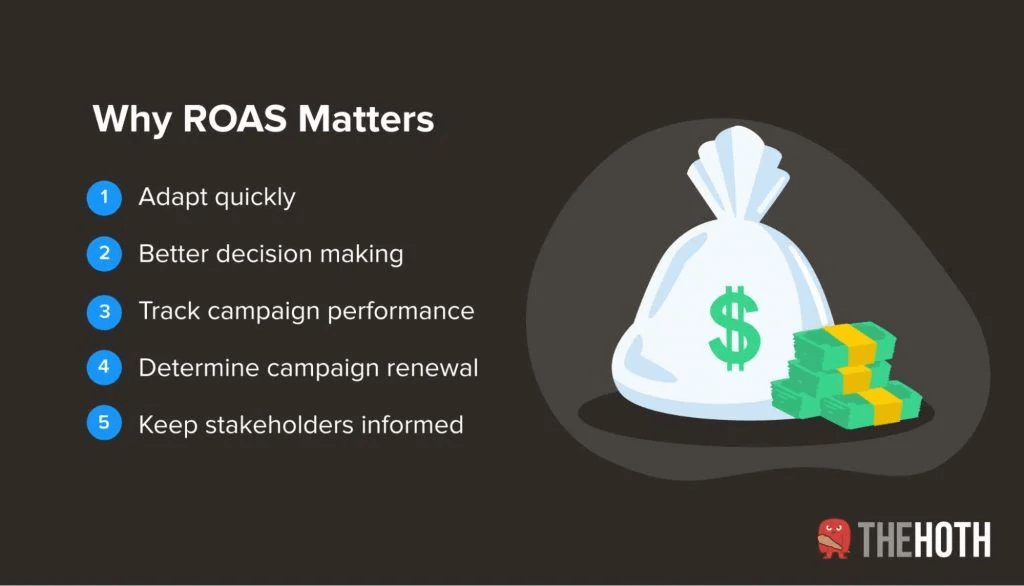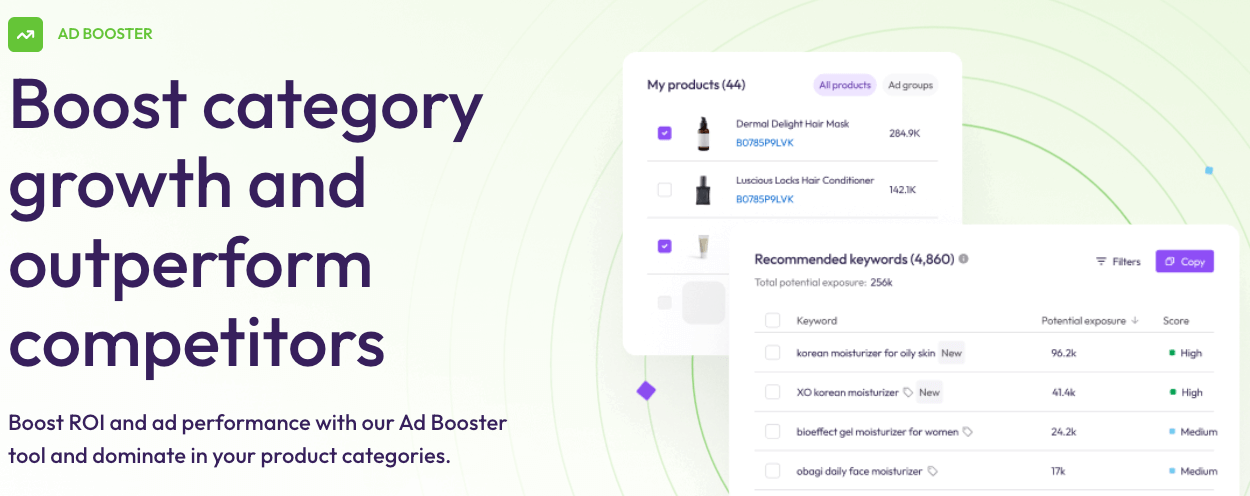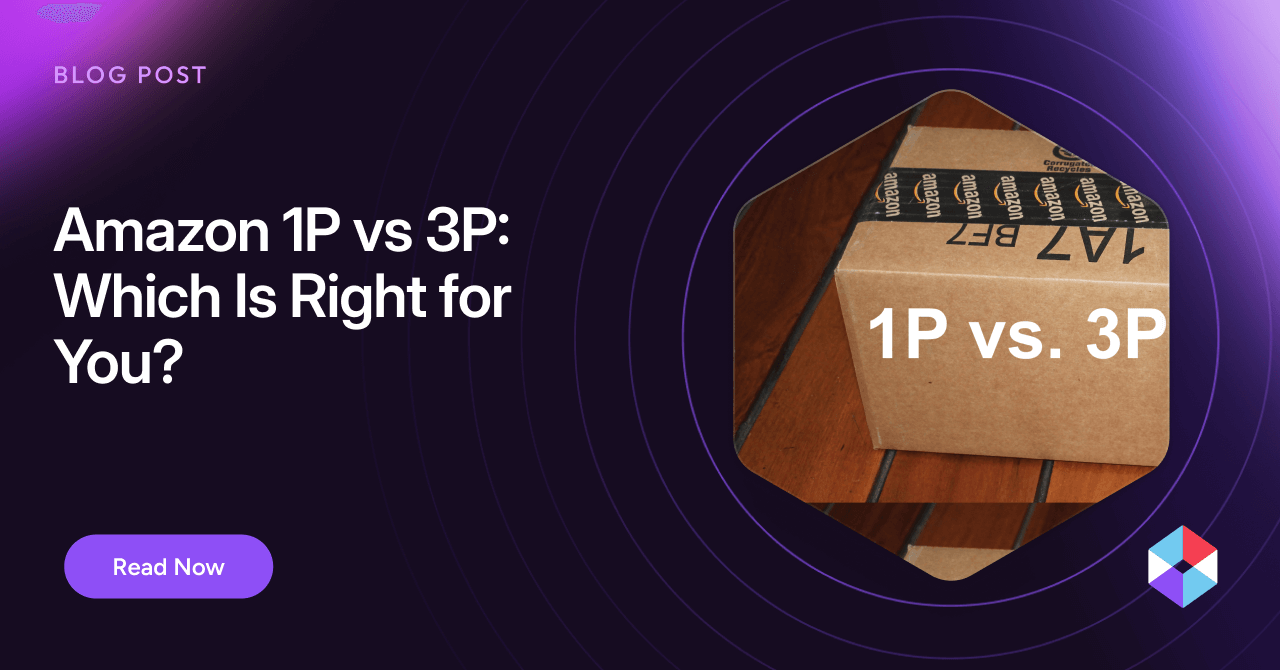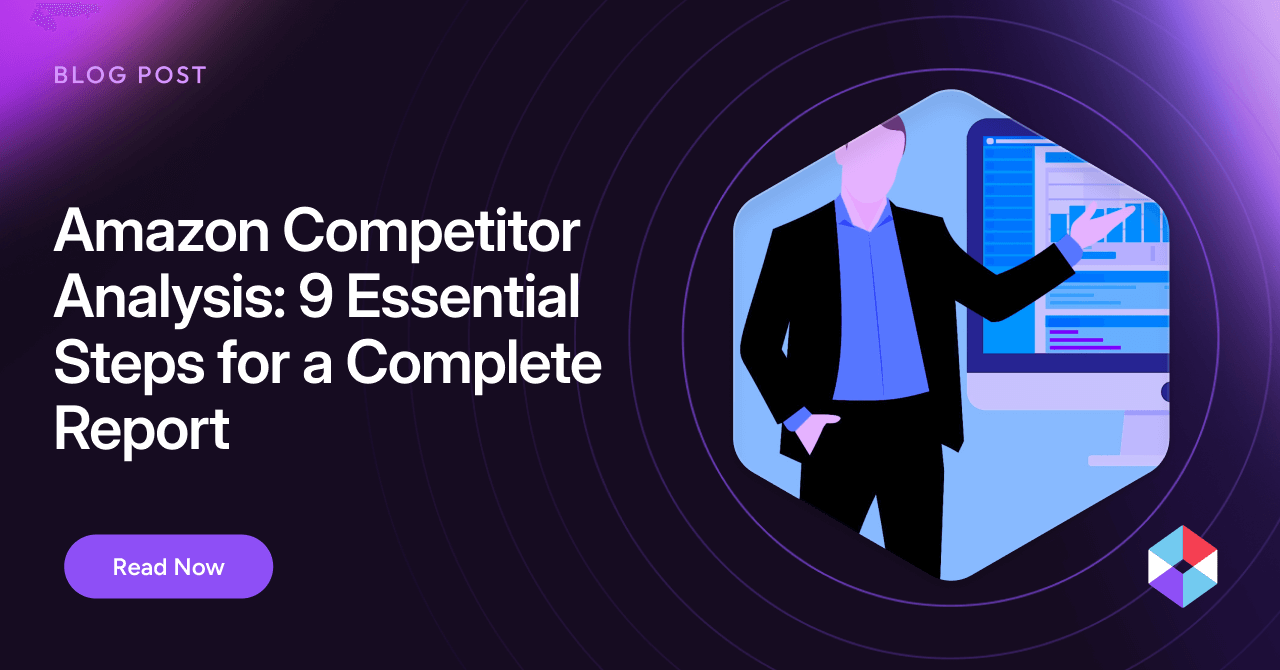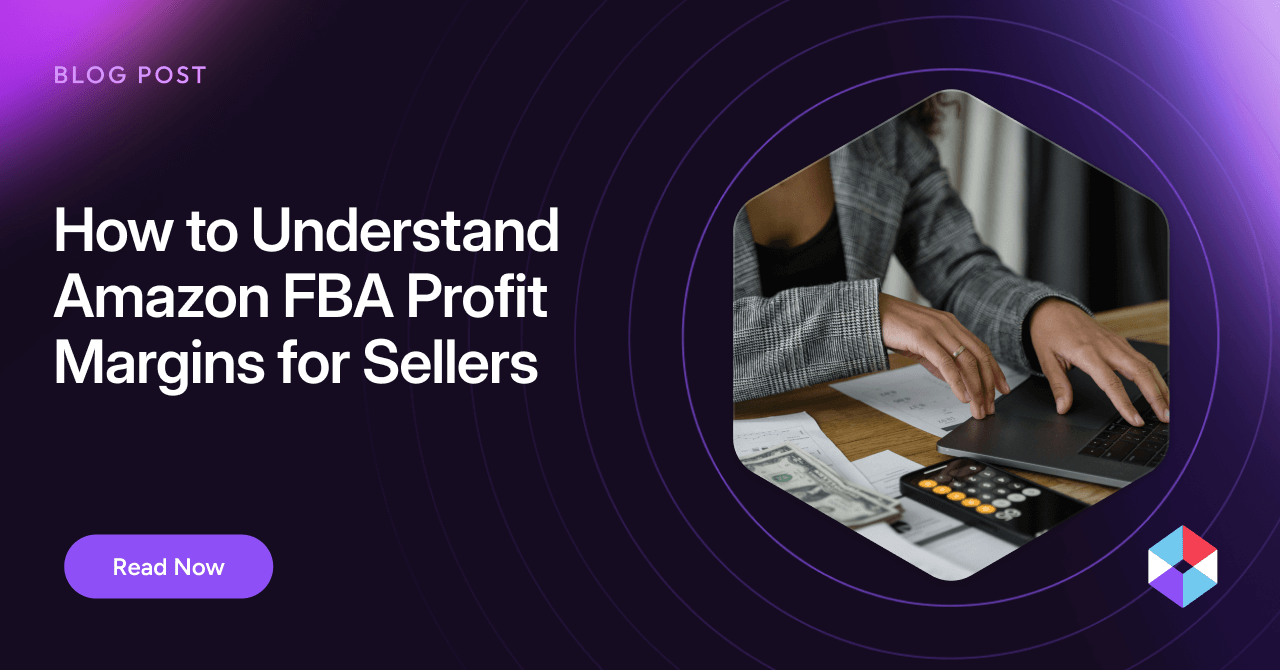How do you stand out from the competition in an Amazon marketplace that’s teeming with competitors selling the same or similar products? That’s the million-dollar question that keeps eCommerce teams up at night. A well-executed ad campaign is often the best way to draw buyers to your store. However, a PPC campaign will end up dead in the water if you don’t focus on the right products and targeting strategy—so it’s vital to have a reliable method of assessing its effectiveness.
Return On Advertising Spend (ROAS) is a straightforward, accurate metric for determining whether your ad campaign will sink or swim. To make sense of ROAS, you need to know how much return to expect from a typical ad campaign. Over half of all third-party sellers can expect to make $7 to $10 in sales for every dollar spent on Amazon advertising. But, depending on your product, target market, and business goals, aiming for this average might not be optimal or realistic.
Figuring out the right Amazon advertising ROAS for your online store will help you see whether a campaign is underperforming and when to correct course. You can use the tips below to understand your ideal ROAS and how to attain it.
What is ROAS, and how do you understand it?
ROAS tells you how much sales revenue you earn from your Amazon advertising investment. It’s calculated by dividing the revenue attributed to your ad spend by its cost. You can calculate ROAS for an entire ad campaign or a specific timeframe.
Here’s how it works: if you spent $1,000 on advertising and earned $7,000 in revenue from the campaign, your ROAS would be 7. This can also be expressed as a multiplier (7x), a ratio (7:1), or a percentage (700%). However you put it, it means you make $7 in sales for every dollar you spend on advertising.
What is meant by a “good” ROAS?
A common rule of thumb is that a ROAS between 3 and 5 is considered “good,” or at least average, but this doesn’t really account for the differences between individual sellers and their categories. Consumer electronics sellers, for instance, can easily reach an ROAS of 9 or higher. Research your industry to find out what its average Amazon ROAS is.
Determining your break-even point can help you set a minimum acceptable ROAS. The age of your business is another factor to consider. A low ROAS may be acceptable at launch as you build up brand recognition and grow a customer base. Once your store is established, you should shoot for a higher ROAS.
What Amazon advertising creates the best ROAS for your store?
There are three main kinds of Amazon PPC ad campaigns: Sponsored Products, Sponsored Brands, and Sponsored Display.
- Sponsored Product ads are for specific products. They will appear as sponsored links at the top of the search results when Amazon shoppers search for your targeted keywords.
- Sponsored Brands ads promote your store with creative images and videos that can appear in search results and product pages.
- Sponsored Display ads target consumers based on their interests and shopping behavior. They can appear on third-party sites as well as on Amazon.
According to one 30-day study, Sponsored Brands had the highest average ROAS (6.28), followed by Sponsored Products (4.85) and Sponsored Display (1.81). Keep in mind that these campaign types are designed for different purposes, and choosing a solution that suits your strategic goals may be more important than going by ROAS averages alone.
What are the factors that impact your Amazon ROAS?
A complex set of interacting variables ultimately determines ROAS. Here are key factors you’ll want to keep an eye on:
- Accurate Targeting – Amazon gives you a lot of flexibility in terms of the products, categories, and audience segments you can target. Your PPC targeting choices will have a significant impact on the conversion rate of your ads.
- Product Listing Quality – The titles, descriptions, and other content in your product pages should be as polished as possible and relevant to the keywords your buyers are searching.
- The Competitive Landscape – Your competitors’ advertising campaigns, pricing strategies, and product offerings can directly influence the effectiveness of your own ads. Using an AI-powered competitive intelligence tool like Noogata can keep you one step ahead of them.
- Bid Pricing – It’s essential to strike a balance between winning the bids for high-performing keywords and keeping your margins high by avoiding overspending. Use Amazon eCommerce analytics software to find underutilized keywords with strong potential.
7 Ways to Achieve the Right Amazon Advertising ROAS
1. Optimize Your Product Listings
Minimal-effort product listings with poorly written copy and low-quality product images motivate customers to click the “back” button and see what your competitors are offering. Listings with engaging copy, informative bullet points, glowing customer reviews, crystal-clear images, and compelling video content drive conversions.
A great ad campaign isn’t worth much if it sends customers to listings that don’t close the deal. Use market research, keyword tools, and listing optimization software to ensure your listings can do the job.
2. Choose the Right Ad Campaign Type
Amazon’s three types of ad campaigns are all designed to serve different functions:
- If you’re trying to sell off excessive inventory of a particular product, Sponsored Products ads make the most sense.
- If you want to build brand recognition and increase visibility, you’re better off with Sponsored Brands ads.
- Sponsored Display ads might do the trick if you’re trying to retarget customers who may be deliberating over a major purchase.
Sponsored Products might have the highest ROAS on average, but sometimes the “right” ROAS is the one that directly complements your business goals.
3. Bid Smart on the Best Keywords
Winning the right keywords for your products is critical, but bidding too high on hotly-contested search terms can depress your ROAS and eat away at your profits. AI-enhanced tools like Noogata’s Ad Booster can identify developing trends and recommend less obvious keywords to drive traffic to your listings without getting you into bidding wars.
4. Try Contextual Targeting
Amazon’s new Contextual Targeting advertising solution is designed to help you reach buyers who’ve opted out of third-party cookies and other traditional methods of tracking consumers across different sites. It targets them based on their current actions, not their browsing history—giving you a better chance of getting the right ads in front of the right eyeballs at the right moment.
5. Boost Your Average Order Value (AOV)
One surefire way to boost your ROAS is to get customers to spend more when they purchase from you. You can make this a win/win scenario by bundling your products, giving your customers great value while increasing the average size of each order you get. Upselling and cross-selling tactics can also help you increase your AOV.
6. Price Your Products Competitively
Ultimately, most Amazon shoppers are looking for the product they want at the lowest price they can find. Offering lower prices than your competitors will turn more of your ad clicks into sales. Use tools like Noogata to track day-to-day price fluctuations and ensure you’re offering the best deal without lowering prices more than necessary.
7. Monitor Your Performance and Adjust
ROAS is a critical metric, but it’s not the only key performance indicator you should look at. Make sure you’re regularly monitoring the KPIs related to your ad campaign goals, and allow yourself some flexibility to adjust your product targeting and selection if it’s performing below expectations.
For example, you can use Noogata to track your paid and organic exposure on Amazon’s digital shelf and boost your campaign effectiveness by acting on its insights and recommendations.
Boost Your ROAS, Grow Your Amazon Business
A higher ROAS is always a good thing. However, a lower ROAS can still be “right” for a particular campaign if it’s serving your long-term goals for brand awareness, capturing market share, or cementing high lifetime value customers’ loyalty.
No matter your Amazon business goals, you’ll meet them quicker and more cost-effectively if you use the right analytics and competitive intelligence solutions. Noogata’s platform leverages the power of AI to provide you with the data and insights you need to grow your Amazon sales and achieve the best possible ROAS.
Schedule a demo today for a firsthand look at how Noogata can help put your online store’s products at the top of the digital shelf.
